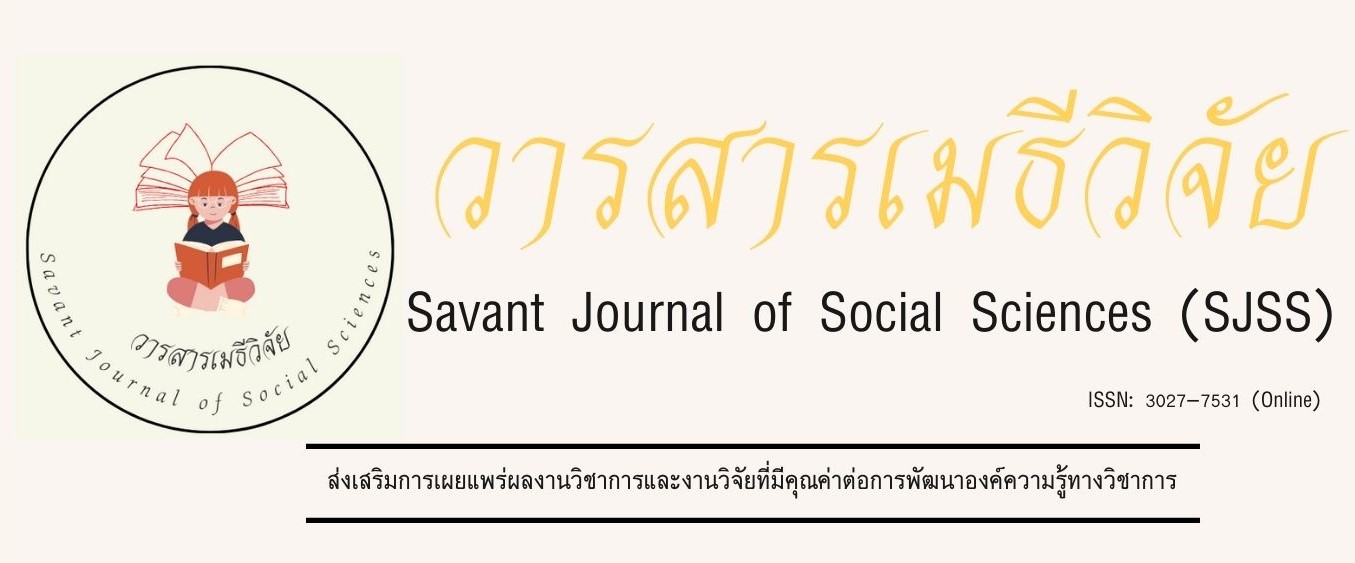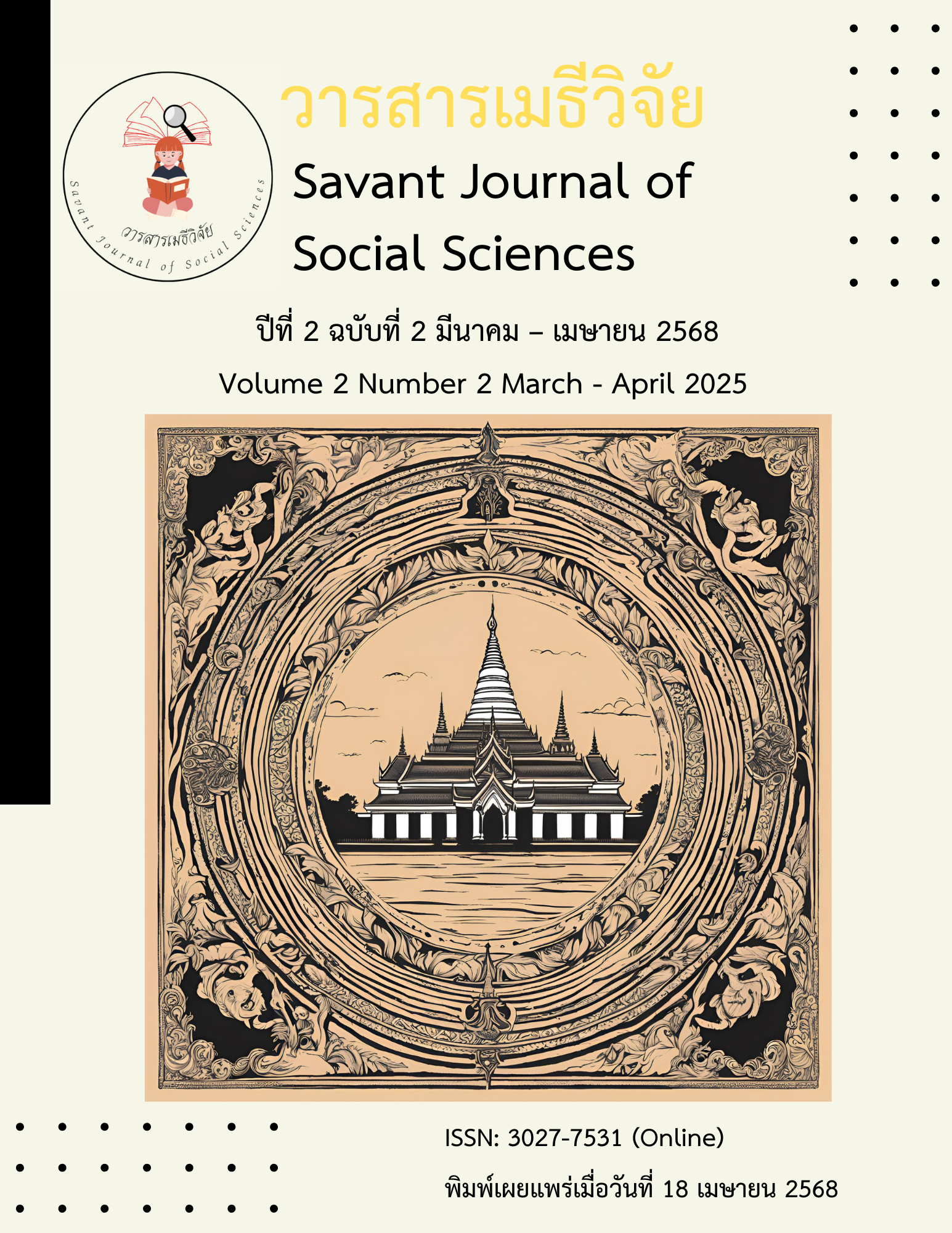The Integration of Cultural Capitals: Phra That Phanom from the Legends of the Urangkhathat to the Upgrade to Being a Cultural World Heritage
Abstract
This research article aims to 1. study and analyze the legend of the Urankathuthat as a cultural world heritage, 2. elevate Phra That Phanom to become a participatory cultural world heritage, 3. develop a knowledge set and curriculum for communicating tourism activities at Phra That Phanom and its neighboring chedis, and 4. propose guidelines for elevating Phra That Phanom to become a cultural world heritage. Qualitative informants included monks, scholars, local residents, community leaders, government representatives, merchants, local tour guides, and students. Quantitative informants were 810 people living in 2 countries, purposively selected. Research instruments included interviews and questionnaires. The research results found that
- The Legend of Urankathathu is a religious text that chronicles the history of Buddhism in both the northeastern region of Thailand and the Lao People's Democratic Republic. It includes an original belief about the Lord Buddha's visit to Phu Kham Phra, during which he prophesied the location for enshrining the Buddha's relics. The legend also highlights the cultural relations between the people on both sides of the Mekong River.
- The promotion of Phra That Phanom as a world cultural heritage involves five components: 1. committee formation 2. public forums 3. educational activities 4. information exchange and 5. cooperation.
- The knowledge set and curriculum for communication of tourism activities at Phra That Phanom and Phra That Phra Athit demonstrated an efficiency value of 81.73/83.50, meeting the established criteria of 80/80. Trainees' English speaking and listening skills improved significantly after the training (p < .05). Moreover, the trainees expressed high satisfaction with the use of the knowledge set and curriculum ( = 4.45).
- The elevation of Phra That Phanom to the level of a cultural world heritage site should be guided by the following principles: 1. Establish a working committee to oversee the process; 2. Allocate a sufficient budget to support the necessary activities; 3. Develop a comprehensive operating plan outlining the steps and timeline for achieving the goal; 4. Implement the plan effectively and monitor progress to ensure success; 5. Foster public participation throughout every stage of the process.
References
คณะกรรมการดำเนินงานเพื่อขอขึ้นทะเบียนพระธาตุพนมเป็นมรดกโลก. (2559). ยุทธศาสตร์การขอขึ้นทะเบียนพระธาตุพนมเป็นมรดกโลก. นครพนม: วัดพระธาตุพรม วรมหาวิหาร.
จิรพันธ์ จันหนิ้ว และคณะ. (2565). แนวทางการมีส่วนร่วมการจัดการศึกษาโดยชุมชนของศูนย์การส่งเสริมการศึกษานอกระบบและการศึกษาตามอัธยาศัย อําเภอลอง จังหวัดแพร่.
นาถฤทัย ทองจันทร์. (2560). การพัฒนาบทเรียนสร้างเสริมความสามารถด้านการฟัง-พูด ภาษาอังกฤษเพื่อการโรงแรม สำหรับนักศึกษาสาขาวิชาการโรงแรม วิทยาลัยอาชีวศึกษานครปฐม. บัณฑิตวิทยาลัย. มหาวิทยาลัยศิลปากร.
ทองใบ สุดชารี, (2549). ภาวะผู้นำ : กลไกขับเคลื่อนองค์การแห่งการเรียนรู้. อุบลราชธานี : สถานบันราชภัฏอุบลราชธานี.
พิชศาล พันธุ์วัฒนา, (2565). บทบาทในการมีส่วนร่วมของประชาชนกับการบริหารงานสถานีตำรวจตามบทบัญญัติแห่งรัฐธรรมนูญ, วารสารเมธีวิจัย, 1 (4) 26.
สมบัติ นามบุรี, (2562). ทฤษฎีการมีส่วนร่วมในการรัฐประศาสนศาสตร์, วารสารวิจยวิชาการ, 2 (1) 188-191.
สำนักงานคณะกรรมการวัฒนธรรมแห่งชาติ. (2552). มรดกภูมิปัญญาทางวัฒนธรรม. กรุงเทพมหานคร: กระทรวงวัฒนธรรม.
อธิราชย์ นันขันตี. (2563). อุรังคนิทาน (ปริวรรต). นครพนม: กรมศิลปากร.
Feilden, Bernard & Jokilehto, Jukka. (1993). Management Guidelines for World Cultural Heritage Sites. Rome: ICCROM.
Cohen John M. & Uphoff, Norman T. (1980). Participation’s Place in Rural Development, Seeking Clarity Through Specificity, World Development.
Jokilehto, J. (2005). A History of Architecture Conservation. [n.p.]: Elsevier.
Jimura, Takamitsu. (2011). The Impact of World Heritage Site Designation on Local Communities—A Case Study of Ogimachi, Shirakawa-mura, Japan. Tourism Management.






